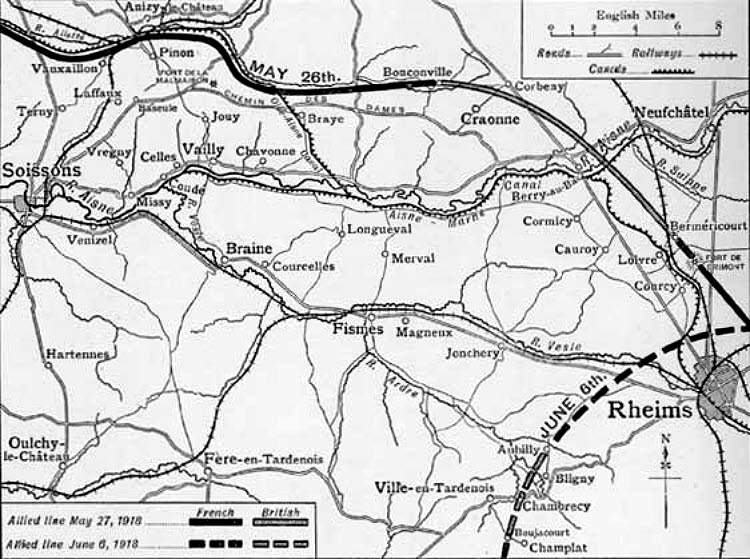
Herbert Terry is remembered on the Ossett South Parish Roll of Honour. He is recorded as living at 14, Albert Street, Ossett and serving in the Worcestershire Regiment, and as being killed in action on the 27th May 1918.
Army records indicate that there was only one Herbert Terry, born in Barnsley, who enlisted at Wakefield, serving in the Worcestershire Regiment at the time of his death. The date of his death however is recorded as 6th June 1918 on the Commonwealth War Graves Commission site. There is an Ernest George Terry, born in Kent, who served in the Worcestershire Regiment and who was killed on the 27th May 1918. Therefore, it seems likely that poor communication in 1918 has led to some confusion regarding the notifications of the deaths of these two soldiers, who were killed in the same action, and both remembered on the same Memorial at Soissons, France. No other historic records have been found which place either Herbert Terry or George Ernest Terry in Albert Street, Ossett, but it is more likely that the soldier who is remembered at Ossett is Herbert Terry, who was killed in action on the 6th June 1918.
Recent evidence (2021) has confirmed that Herbert Terry was confirmed as “missing” on 27th May 1918 but that his date of death was 6th June 1918 and the Ossett South Parish Roll of Honour was mistaken in its interpretation .
Herbert Terry was born in Barnsley in 1893, the eldest child of Herbert Terry and his wife, Elizabeth (nee Snape), who married in the Barnsley area in early 1892. The couple had eight children from their marriage, but two two died before April 1911. In 1901 the family were living at Fenton Heald Yard, Wakefield where Herbert senior was an iron worker.
In 1911, the family had returned to Barnsley and Herbert Terry junior, aged 17, was a taker in at a glass bottle works. At some later stage it appears that Herbert returned to the Wakefield area, where he enlisted and at some time moved to live in Albert Street, Ossett, where he is recorded on the South Ossett Parish Roll of Honour. At some time before his death, Private Herbert Terry was awarded the Military Medal.
Herbert Terry’s army service record has not survived, but it is known that he enlisted at Wakefield, joining the Yorkshire Light Infantry with the service number 17786, and then transferring to the 1st Battalion Worcestershire Regiment with the rank of Private and the service number 40490.
The 1st Battalion of the Worcestershire Regiment was a Regular Army group and in August 1914 they were in Cairo, Egypt. The Battalion returned to England, landing at Liverpool on the 16th October 1914 and came under command of 24th Brigade in the 8th Division. They moved to Hursley Park (Winchester) and landed at Le Havre on the 6th November 1914.
Private Herbert Terry, M.M., was killed in action on the 6th June 1918 during the last day of the Battle of the Aisne, part of the Second Battle of the Marne. The 1st Battalion of the Worcestershire Regiment were part of the British 8th Division, 24th Infantry Brigade assigned to the British Army 9th Corps. The battalion’s trench was on the front line and extended from Boujacourt to Chantereine Farm in an area called Bois de Courton. At 3 a.m. on the morning on the 6th June 1918, the German Artillery opened with intense fire for approximately one hour, followed by a frontal attack by German infantry. It is thought that Herbert Terry was killed during that bombardment. He has no known grave and his name is on the Memorial in the town of Soissons, approximately 100 kilometres north east of Paris. Private Herbert Terry was posthumously awarded the British and Victory medals. He did not serve overseas before 31st December 1918.

Above: Map showing the German advance during the Third Battle of the Aisne between May 27th and 6th June 1918.
Private Herbert Terry, M.M., aged 25 years, died on the 6th June 1918. He is remembered on the Soissons Memorial,1 Aisne, France. The town of Soissons stands on the left bank of the River Aisne, approximately 100 kilometres north-east of Paris.
The original British Expeditionary Force crossed the Aisne in August 1914 a few kilometres west of Soissons, and re-crossed it in September a few kilometres east. For the next three and a half years, this part of the front was held by French forces and the city remained within the range of German artillery.
At the end of April 1918, five divisions of Commonwealth forces (IX Corps) were posted to the French 6th Army in this sector to rest and refit following the German offensives on the Somme and Lys. Here, at the end of May, they found themselves facing the overwhelming German attack which, despite fierce opposition, pushed the Allies back across the Aisne to the Marne. Having suffered 15,000 fatal casualties, IX Corps was withdrawn from this front in early July, but was replaced by XXII Corps, who took part in the Allied counter attack that had driven back the Germans by early August and recovered the lost ground.
The Soissons Memorial commemorates almost 4,000 officers and men of the United Kingdom forces who died during the Battles of the Aisne and the Marne in 1918 and who have no known grave.
References: